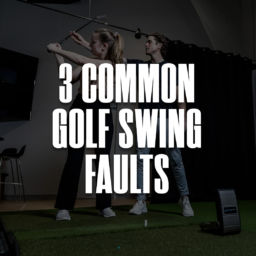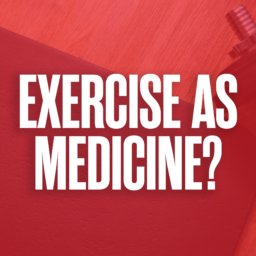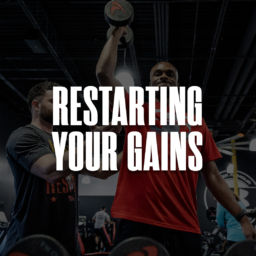Evan Cocke M.S, TPI, CPT
Bryson has captivated audiences from golf fanatics to even people who think golf is the most boring sport that has ever been invented by mankind. He is currently a polarizing figure in the golf world. There are the people that admire the work he put in to increase his clubhead speed and make the body composition changes he made. Then, there are traditionalists that think he is ruining the game. Turning it from the art form it once was into a brutish, simplistic “smash ball, find ball” approach. No matter how you slice it, there is no denying the fact that controlled distance is a huge asset on the pga tour.
Clubhead speed is something that matters in golf. I am not a firm believer in the drive for show and putt for dough philosophy. If that is your game and you enjoy having long irons into par 4s but you could get up and down from even a gopher hole then, by all means, play your game. Most people don’t possess that type of short game but most people do have the ability to gain distance. It is a low hanging fruit that will benefit your golf game and your health in the process. Plus, all golfers love playing with someone who can swing hard and hit the ball a long way.
Clubhead speed has many factors. From a golf professionals point of view there is the swing mechanics and equipment. The swing mechanics and technical aspect of the golf swing might play the biggest role in being able to generate clubhead speed depending on who you talk to. Then, from a fitness professionals perspective, we have the mobility and physical power. Strength is important because it is the base needed for increased power. Power is just strength + speed. For example, if two people are squatting the same weight, the person that moves the weight up quicker would have more power. Strength is vitally important because first you have to be able to lift the weight in the first place. Then focus on how fast you can move heavier weights. Simply put, mobility is the ability to get into the positions in the golf swing that are necessary for optimal mechanics and ability to generate club head speed. That will be a topic for another blog post.
Strength and power play a huge role in clubhead speed because the golf swing is a short, explosive and powerful action. A recent systematic review published in the European journal of sports science showed the highest correlation with squat strength which was followed by upper body strength and power. This shows how important raw lower body strength is. In golf you ideally want to generate force from the ground up. A concept called “ground reaction forces”. A strong and stable lower body creates an anchoring effect which allows you to create a powerful golf swing. Yes you need to be able to move quickly in a golf context but most people try to skip a few steps when training for golf. They go straight into the highly golf specific drills like cable rotations or balance exercises while completely ignoring the foundational exercises. The goal in the gym is to build physical qualities that can transfer well to golf. This is highly dependent on the level of the athlete. More advanced athletes will have to take a more planned out and targeted approach to achieve the desired results.
Why Strength Matters for Golf
Stronger athletes are able to express more power and speed. If you are stronger, you will likely be able to respond more favorably to power and velocity based training. If you find yourself in the gym new to the concept of training for golf do not overcomplicate it. Focus first on getting stronger at the basic movements. Learn to squat, hinge, push, pull, brace and rotate. The stronger base you have the more responsive you will be to more golf specific training. If you are looking for strength and power relative to golf there really is no need to go over 6 reps per set (depending upon your level of training). The volume should be kept low, especially during the golf season.
Single leg training will also be imperative in this stage. The golf swing is a bilateral movement but pressure can shift to upwards of 80-90% on one leg throughout the golf swing. You need to know how to load a single leg through certain hinge and squat patterns.
When in the gym hard work is important. Your workouts should not be judged on how much you sweated or how tiring the workout was. If you are looking to gain strength for golf the most important aspect of the workout should be the intent of the movement. Maximal intent and energy should be spent during every repetition rather than doing sustained high intensity exercises. More rest inbetween sets will allow for a higher intensity during the working sets which will allow for more force production. More force production will result in a stronger, and more stable body.
That is not to say that conditioning or intense exercise does not have its place. If your goal is increased clubhead speed, more stability, or just better golf then your priority should be focused on the strength aspects with supplemental exercises at the end of your workouts or on another day based on other health or fitness goals.
Golf specific exercises are overrated.
I said it, and I won’t take it back. If you’re new to strength training and you are looking for increased golf performance do not waste your time focusing solely on mobility, flexibility, stability or exercises that mimic the golf swing. Those all have their place but they shouldn’t be your priority if you don’t have a base of strength. If there are any limitations in movement that hinder your ability to perform the foundational movements those will need to be addressed. It is not to say that mobility work is useless because it definitely is needed. The problem is when time is spent working out doing only low load, mobility, golf specific movements. That work should compliment your high force foundational strength movements.
The problem is that most golfers lack basic strength and resilience. A proper strength training program will not only help increase mobility and stability throughout certain ranges of motion it will decrease risk of injury. The golf swing is a stressful and violent movement for the body. Especially for those swinging hard. When this motion is repeatedly performed it will eventually take a toll. More flexibility, mobility or highly golf specific exercises will not be optimal for increasing the robustness and resilience of your body. Pick compound exercises that can be done safely and efficiently. The goal is for these exercises to increase your performance potential and body’s ability to handle the demands of the golf swing.
Work with a strength and conditioning coach
Strength and conditioning coaches may not be “specialized” in golf performance but they can certainly get you to where you need to be. If you are new to the gym or new to training beyond aesthetics S&C coaches will help you figure out your goals and develop a training plan that is targeted for the specific adaptations you are looking for. Training for any sport is more than just picking up weights and putting them back down. There is an optimal approach for almost everything to get you to the end goal faster. Strength Coaches are there to help develop the optimal plan based off of your individual needs.
The bottom line is that most golfers do not need to focus on perfect mobility, range of motion or pulling a cable down mimicking the golf swing. Notice how I said “most golfers”. Once you have built up a strong base and are reaching the point where you have plateaued from a golf performance perspective that is when you start diving down the rabbit hole of rate of force development, intra abdominal pressure, ground forces, stretch shortening cycle and all of the biomechanical intricacies that may be applicable to the individual. There are obviously a ton of nuances to training in general. Certain modalities can be applied to achieve a specific result but there is absolutely nothing that can go wrong with building up a foundation of strength. Everything you do from golf to every day activities will benefit.










